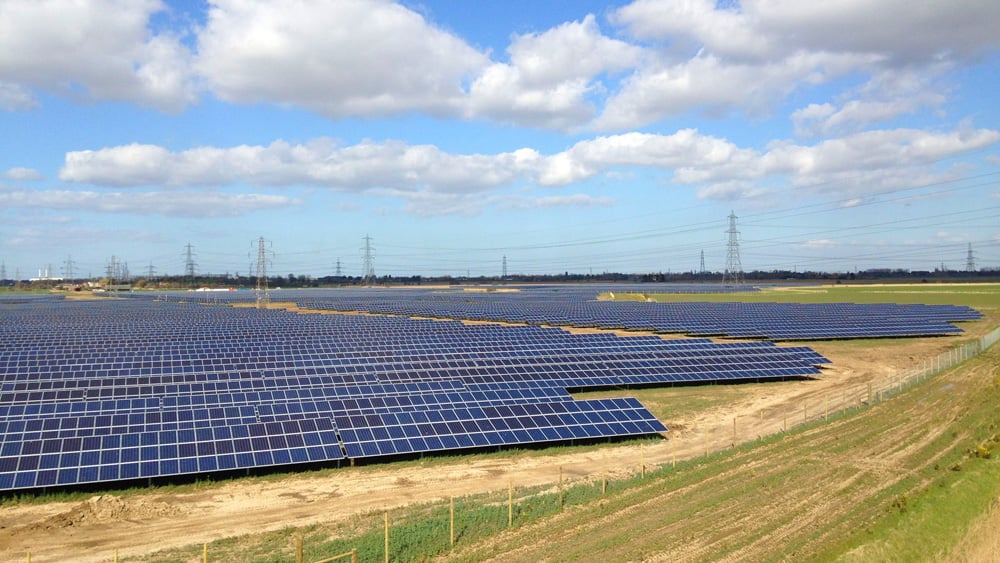Connecting to the electricity grid is one of the biggest obstacles facing the green energy transition today. The associated bottlenecks have caused many countries problems in bringing a healthy and beneficial renewable energy pipeline onto their national electricity grids, but in this decade that matters, where we must accelerate the deployment of renewables, every MW is necessary for a successful energy transition.
If we want to avoid grid congestion and secure the full potential of renewable energy, further innovation is needed – for example when it comes to the combination of green energy projects we use. Fortunately, there is one promising solution in the form of hybrid power plants.
How hybrid can change the status quo of the electricity grid
Hybrid projects generate electricity through a combination of renewable energy sources and/or storage resources. For example, it may concern wind and solar energy, wind energy and storage, or solar energy and storage. They represent a significant opportunity for the green energy transition due to their unique ability to combine different renewable technologies and, crucially, to connect via a common grid connection point.
This bypasses some of the biggest barriers to green energy and delivers significant cost savings through shared network and land use. Many hybrid projects even use existing grid connections, further removing bottlenecks and shortening waiting times for grid connections.
However, the benefits don’t stop there. For example, if a PV or wind energy project is combined with storage options, the sustainable energy produced can be stored and made available when needed. This means that during periods of high energy supply, the flexibility and stability of the electricity grid are maintained – a significant advantage given the volatility of the energy market.
Owners of hybrid projects can also benefit from additional revenue opportunities in the energy and ancillary services markets. The income from a renewable energy plant often forms the primary income of a project. Adding flexibility through storage provides additional revenue and can secure the long-term future of a project. Combining solar or wind energy with storage also gives project owners more freedom in selling excess energy, allowing them to avoid selling when the price is low, helping to optimize profits.
Another notable advantage is that hybrid projects can improve the acceptance of local stakeholders for the development of sustainable energy projects, as they are seen as more innovative and effective in promoting the green transition.
Current challenges for hybrid projects
Despite the economic, technological and logistical advantages that make a compelling case, hybrid projects require further political awareness and favorable regulations to realize their potential.
Currently, policy is not keeping pace with the innovation and willingness that these projects bring. It also does not meet the special conditions for hybrid projects. Favorable regulatory conditions are needed if hybrid projects are to reach their full potential, especially with regard to grid integration rules and permitting processes. More political recognition is also needed; especially from the European Commission, which has just recognized the value of battery storage, but does not provide specific guidelines for hybrid. Associations such as EASE exist to accelerate the deployment of energy storage to support the energy system; such an association for hybrid projects would help increase its momentum.
There are positive steps in the right direction across Europe; published frameworks that more countries and industry organizations should follow to avoid slowing the pace. For example, Spain’s Royal Decree Law saw the country amend its electricity sector law to introduce the possibility of hybridization of installations, accelerating local innovation in hybrid development.
Germany showed similar leadership with its EEG Innovation Tender, encouraging the combination of solar and battery storage installations. Yet this is only part of the puzzle, as storage systems must also be able to charge via the electricity grid, and not just from the PV installation. While this is positive progress, more countries still need to publish clear frameworks on hybrid development to avoid slowing momentum.
There is also a lack of knowledge about integrating hybrid projects into grids designed for fossil fuels and standalone renewables, fueling the general hesitation around connecting mixed asset portfolios to the grid. The industry must do more to address such concerns from grid operators, as this slows down the future success of hybrid projects. One thing that can help is to educate operators about the benefits of hybrid technologies and help cultivate a collaborative approach to connecting these technologies to the grid.
We cannot afford to regret not accelerating the hybrid
The value of hybrid energy projects is enormous. They increase the efficiency of the energy system, ensure greater stability in the energy supply and can and will therefore be an important part of renewable energy in the future. Developers recognize this and are prepared to deliver at scale.
In 2025, we are halfway through the decade that matters most for our planet. And if we don’t want to see the 2020s as a missed opportunity, more action is needed to promote hybrids.
We must therefore act quickly to capitalize on the greater community acceptance for hybrid projects, educate those unaware of their extensive benefits, and collectively advance the green transition.

